TechRadar Verdict
A well-balanced CDN, powerful and configurable enough for enterprise users, but accessible and affordable for small businesses and even individuals. Setting up an account can take a while, though – you might have to be patient.
Pros
- +
Many PoPs in mainland China
- +
Relatively easy to set up and use
- +
Low prices for this level of service
- +
Integrates with many other Tencent services
Cons
- -
Lengthy identity verification process
- -
Complex pricing scheme
- -
Brotli compression unavailable at review time
- -
Cache purges can take 5 minutes
Why you can trust TechRadar
Tencent Cloud Content Delivery Network is an enterprise-level CDN from Chinese tech giant Tencent Holdings.
It's a part of Tencent Cloud, a huge AWS and Microsoft Azure-like collection of cloud services and platforms. If you're looking to build a solution from scratch, you could connect the CDN to one of Tencent's virtual machines, a cloud storage bucket, maybe plug in a live media streaming product, and other features cover everything from databases and networking to IoT, Big Data and AI. But if you're only looking for a CDN, don't worry; that's okay, too.
Tencent Cloud CDN stands out immediately for its huge presence in mainland China, with more than 1,100 nodes around the country. Most CDNs have no mainland China locations at all, and even Chinese competitor BaishanCloud lags behind with 500+.
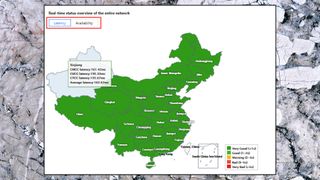
The company's global network also has plenty of power with 1,000+ further nodes spread over 50+ countries, and a combined bandwidth of a giant 120Tbps.
- Want to try Tencent Cloud CDN? Check out the website here
Setup can be very simple: point the company at your origin domain, add a CNAME record at your domain registrar to point at the CDN, and you're more or less ready to go.
But there's a lot of fine-tuning and low-level customization on offer, too. You can tweak expiration times for different file types, directories or paths, for instance – or allow (or block) access by IP address, referer or user agent. It is also possible to prevent hotlinking with various smart timestamp-based schemes, add free SSL certificates, and the list goes on.
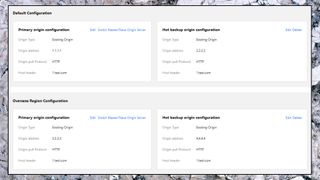
Pricing
Tencent CDN fees are based on a pay-as-you-go scheme where you're charged for the bandwidth you use. Prices vary by region, and depending on the amount of traffic you use.
If you're looking for servers on the Chinese mainland, Tencent's are as cheap as you'll see, with prices starting at $0.037 per GB. Discounts kick in early, too. No need to use a petabyte (1024 terabytes) before you start to save big money: you'll pay only $0.026 per GB on data from 50 to 100TB, and just $0.02 after that.
North America and Europe are fractionally more expensive at a starting $0.045 per GB, but again they fall to $0.02 for traffic above 100TB.
Prices rise for other regions, but not as steeply as you'll often see elsewhere, with even the most expensive regions (Middle East, Africa, South America) costing around $0.1039 to $0.108 per GB.
By contrast, CloudFront charges $0.17 in India, Microsoft Azure CDN peaks at $0.233 in South America, while Fastly asks a chunky $0.28 per GB in Brazil, India and South Africa. If you're looking to address a worldwide audience, Tencent should cost less than most.
If you have a simple website, maybe not using much traffic, then you could still save money elsewhere. StackPath's starter CDN is just $10 for 1TB bandwidth a month, for instance, or $0.01 per GB, while Bunny's limited Volume plan charges a flat rate of $0.005 per GB worldwide. Neither begins to match Tencent CDN for features, but they're both significantly better than you'd expect for the cash you're (barely) paying.
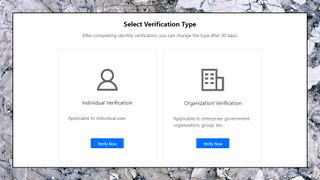
Identity checks
Signing up with Tencent requires handing over plenty of personal information. First the site asked for our date of birth, country, email address and mobile phone number. After verifying our email and mobile, it asked for credit card details and a billing address. Then it prompted us for our full name, address and phone number, again. Finally, it warned that if we wanted to use edge nodes in mainland China, we would also have to verify our identity 'as required by mainland China's laws and regulations.'
We finally made it to the console and found a menu of 65 Tencent Cloud services. Typing CDN in the search box pointed us to the relevant link, though, and we reached the service console with a click. Only to find another demand to verify our identity. (Despite the site suggesting this only applied to people using the mainland China network, it seems to be necessary for everyone.)
This time, the site gave us two options. Verifying as an organization required providing registration details and a certification photo, while the individual verification screen asks for your name and address, yet again, and details plus a photo of your passport or driving license.
We filled in the form, uploaded our images, and the site told us that we'd have the results in 2-3 working days. But that seems to be a worst case scenario, as we had our results back the next day, and assuming verification is passed, that finally grants access to the service.

Setup
Enterprise CDNs don't usually make many concessions to newcomers. Their consoles assume vast technical knowledge, and even the support sites can be more confusing than helpful.
Tencent Cloud tries to be more accessible. When you're creating your first 'distribution', entering a domain name and choosing its settings, the page options are reasonably clear, with tooltip-like notes to explain some points. These aren't always well chosen, so there's a help icon for the Region setting (with options of Chinese Mainland, Overseas and Global), but nothing for 'COS Origin' or 'Enable Range Gets.' Still, Tencent makes more of an effort to be clear than many of the top CDNs.
That's good news, because there's a lot of power here. We don't have the space to begin to do justice to the service, but here's just one example.
Basic CDNs might invite you to enter a single origin server (mydomain.com), then leave it at that. Simple, but limited.
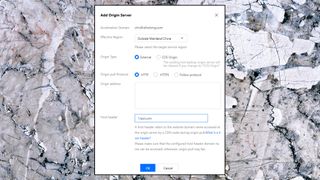
You can do the same with Tencent, but that's just the start. You could also enter multiple IPs, for instance, for greater reliability. The system allows you to set a threshold of failed origin pulls for an IP, and if it exceeds that, the IP will be ignored for a while, then automatically resumed.
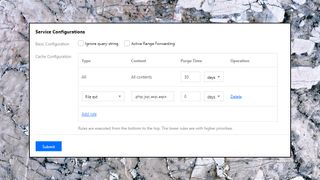
Some of your origins are more capable than others? No problem, you can optionally provide a weight to ensure your best-performing servers get the most requests.
There's also support for IPv6 origins, and you can choose a custom port for HTTP protocol origin pull (HTTPS is still 443-only).
You don't need to get into the low-level details of all this, if it's unnecessary. You could just enter one origin server, one CDN name, and leave it at that. But it's good to know this extra functionality is there if you need it.

There are some complications, too. CDNs generally allow you to configure your service setup immediately, with no need for any other changes. Tencent requires that you verify your ownership of the domain, first by adding a _cdnauth record to your domain name with a special authorization key. This isn't a big deal, and you only need to do it once, but it's inconvenient, especially if your DNS changes don't propagate for a day or two.
If you're looking for help, then Tencent's support site has a lot to offer. Take a look at the support site tutorial, for example. Configuring a CDN properly is a very technical task, but Tencent assumes much less knowledge than most: basic concepts are covered, there's a quick walkthrough of the console, documents are organized into sensible categories, and they're genuinely readable, with screenshots and clear examples to explain most points. Sure, there's not the depth and detail you'll get with Google Cloud CDN's documentation, but Tencent's support content is well-presented and should get you up and running at speed.

Features
Tencent Cloud's features include some helpful and surprisingly simple tweaks.
Suppose you want to optimize your CDN for video streaming, for instance, or maybe large files. Normally you're left to figure out how to do that for yourself. Tencent includes a Service Type setting which enables specifying the type of optimization you need – regular static content, download acceleration if there's a focus on large files, or streaming via video on demand – with a click. (The site doesn't clearly explain what this is doing, though, which might be a concern for more technical users.)
At the same time, many other features have real depth. Basic CDNs might limit their access control to simple IP address blacklists and whitelists, for example. Tencent Cloud supports that, but goes much further, including the ability to limit the number of requests per second from a client IP (a simple form of DDoS protection). Experienced users can even configure timestamp-based authentication systems to prevent others hotlinking their content.
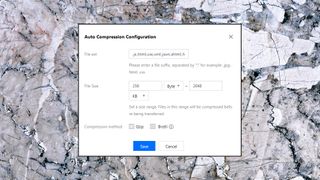
It's not all good news. Brotli compression is a very efficient way to optimize content, for instance, but the site said this was 'being upgraded' and unavailable at the time of our review. The word 'upgraded' makes this sound like some positive move, but for active Tencent CDN customers, it translates to 'we're disabling this feature for a while, reducing service performance.' Maybe not what you want to hear.
But on the plus side, Tencent does otherwise handle compression well, intelligently choosing the best optimizations but also offering low-level controls for anyone who needs them (check out the compression system on the support site, which should also tell you if Brotli is still disabled).
Cache purging allows you to remove content stored by Tencent Cloud – valuable for something you've just updated and need users to see immediately. The problem here is they won't see it quite 'immediately', as Tencent says it takes 'about five minutes' for a purge to complete. Chinese competitor BaishanCloud handles purges in seconds, but five minutes is better than some, and unlikely to make much of a difference to many classes of website.
The mostly positive impression continued as we uncovered even more interesting and advanced features. Concerned about costs, for instance? You can set a bandwidth cap. Need to share resources across domains? There's a hugely powerful system for manipulating response headers.

And although we've said this before, we're going to say it again: the well-presented support site makes it much more likely that even the average user will discover these features and be able to use them. If the service sounds interesting to you, don't take our word for it – spend a couple of minutes browsing the user guide and find out for yourself.
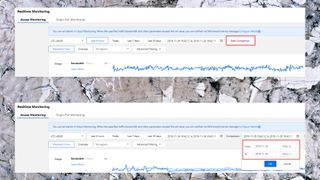
Final verdict
Verification and admin hassles can make for a lengthy setup process, but get past that and Tencent is a capable CDN which is good value, highly configurable, has plenty of features, and even CDN newbies shouldn't have much difficulty in getting it up and running.
- We've also highlighted the best CDN

Mike is a lead security reviewer at Future, where he stress-tests VPNs, antivirus and more to find out which services are sure to keep you safe, and which are best avoided. Mike began his career as a lead software developer in the engineering world, where his creations were used by big-name companies from Rolls Royce to British Nuclear Fuels and British Aerospace. The early PC viruses caught Mike's attention, and he developed an interest in analyzing malware, and learning the low-level technical details of how Windows and network security work under the hood.

